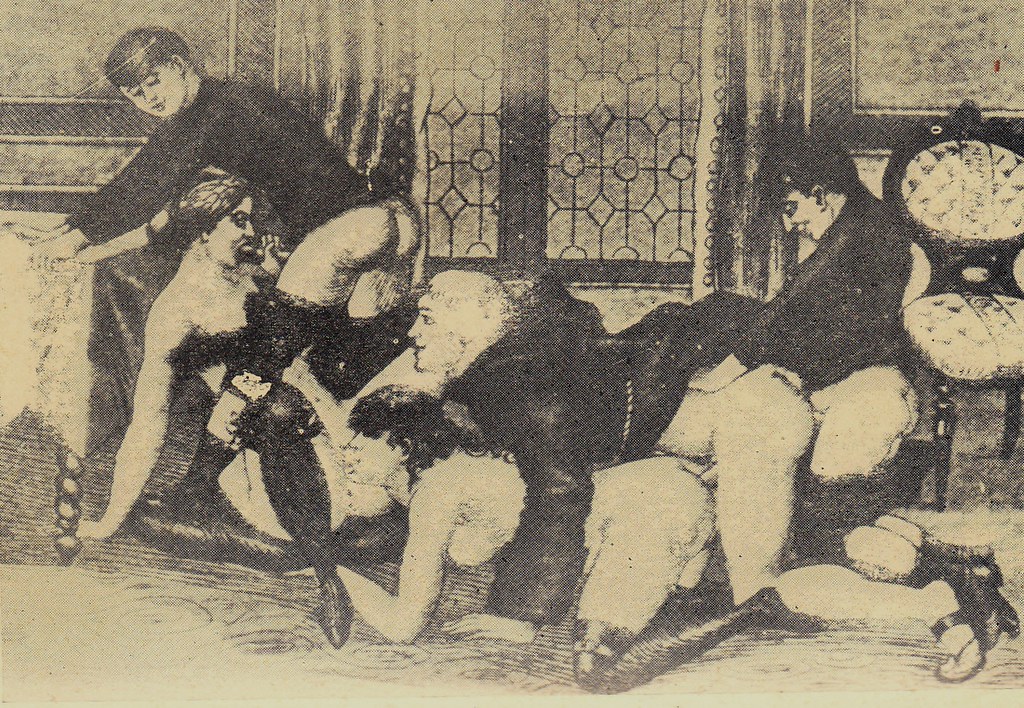I have been missing many #evernighties posts, due to personal reasons, but, back then, I had began to put this post together. It was the prompt for two weeks ago or, so, but it's a fun (and very inappropriate) post, so I'll put it up today anyway. Scroll at your own risk, nudity, yada yada.
What I have learnt while researching my book?
I always learn loads of stuff whenever I write any book, because I am a little (lot) obsessive in my research. The most research intensive was certainly A Muse to Live For. Writing historical romance or fiction is not the faint of heart.
Muse (as it is affectionately called in the family) is set mostly in Victorian London, a place I thought I knew fairly well from reading lots of Dickens novels, and all of Sherlock Holmes Adventures, and many other books written and/or set in the same period. But the truth is that when you start writing you realize how many details you missed in the books and you have to start digging on your own. In any case, these are some of the things I found most curious and enjoyable during my Victorian explorations.
Although the Victorians are always considered prudish and repressed, just under the powdered, betasselled surface of their respectable facade they actually got up to all manners of delightfully dirty stuff. Sex was had. In plenty. Although respectable women were supposed to scorn sex, that was not stopping respctable men from satisfying their urges one way or another.
There was a lot of pornography passing hands in discreet ways.
Some of it was deliciously queer too.
And the favorite place in London where to obtain your smutty books and pics was Holywell Street.
This place was "variously described as “a foul sink of iniquity”, “a place where dirt and darkness meet and make mortal compact” and, in the words of the Times, “the most vile street in the civilized world”.
It was, in other words, a tremendously interesting concentration of independent publishers specialized in erotica, and the centre of London's booming pornography trade.
The sex trade in London was seriously massive. So, so many lower class women were concentrated in this fast growing town, and they often lacked the means to make ends meet in any other way. One estimate suggests that Victorian London may have have had as many as 80,000 prostitutes. Many of them would have been employed in regular jobs and only sold sex as a side business. Even so, that's a lot of "fallen women".
And there were male prostitutes too. Variously called Mary Anns, or Telegraph Boys, or various other names, their trade was slightly more dangerous than that of their female counterparts, given that homosexual intercourse was a serious crime. However, they were considered "better off" than the women in the same trade, because a man always had more agency at the time than a woman, and it was easier for them to extricate themselves from poverty and from the sex trade and get into regular employment. They mostly worked under the radar, as can be expected, but occasionally scandals did happen.
Much prostitution and crime were concentrated in the East End of London, which was a rather unsavory part of town. Spitalfields and Whitechapel had been affluent quarters that had fallen in poverty and disrepair and housed (more or less) one of the largest concentrations of the poorer classes in town. These were a mixture of the unemployed, those who had a job but still could not make a decent living, sailors, gaol birds, petty criminals, fallen women, the old and invalid... it was a pretty horrific underworld. It was also alien territory for the richer upper classes. However it became bizarrely fashionable to visit these poor quarters sometimes for philanthropic reasons, but sometimes just for the frisson of the dangerous and the unknown, and sometimes for a finding taboo sex opportunities.
One of the most famous streets in the area was Petticoat Lane, base of an unlicensed Sunday market where much fencing of stolen goods took place. Ironically, the name was considered too smutty (because a petticoat was a piece of underwear, you know?), so it was changed to... Middlesex Street. You can't make this shit up!
These were the haunts of the infamous Jack the Ripper. Definitely a dangerous place where to live.
Not all prostitution happened in the dreary slums of the East End, or involved poor and deprived women, and not all homosexual trysts ended in imprisonment as Oscar Wylde's famously did. Some wonderfully queer characters made their way into fashionable society, dodging scandals and legal entanglements (although not without collateral damage). Ernest/Stella Boulton is certainly one of the most colorful and interesting character that ever shocked Victorian London. An accomplished cross-dresser he/she was part prostitute, part mistress, part music-hall star and wholly unstoppable.
The best way to "walk" the streets of Victorian London are the Charles Booth's Poverty Maps. These were compiled in order to locate the problematic areas of the town, and each road was colored according to a code that placed the area on a spectrum from the worst poverty to most respectable and well off. It's much more than a map. It paints whole social picures. It' amazing how often very poor streets sat back to back with very rich ones!
So, London has certainly changed a lot since then. The smutty shops in Holywell street were demolished to enlarge the Strand, Whitechapel and Spitalfields are fashionable districts, and pornography is somewhat more cynical and less fun.








